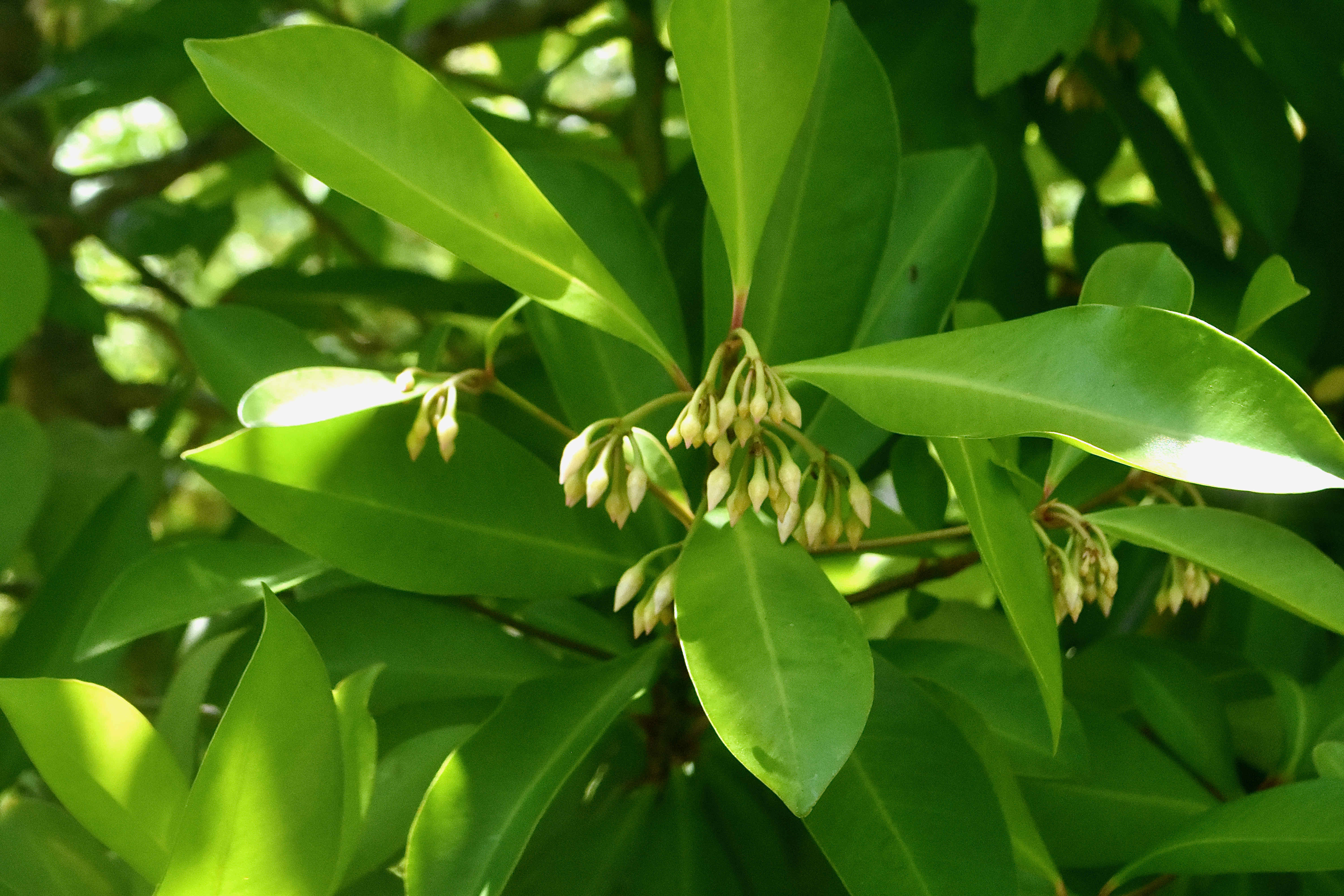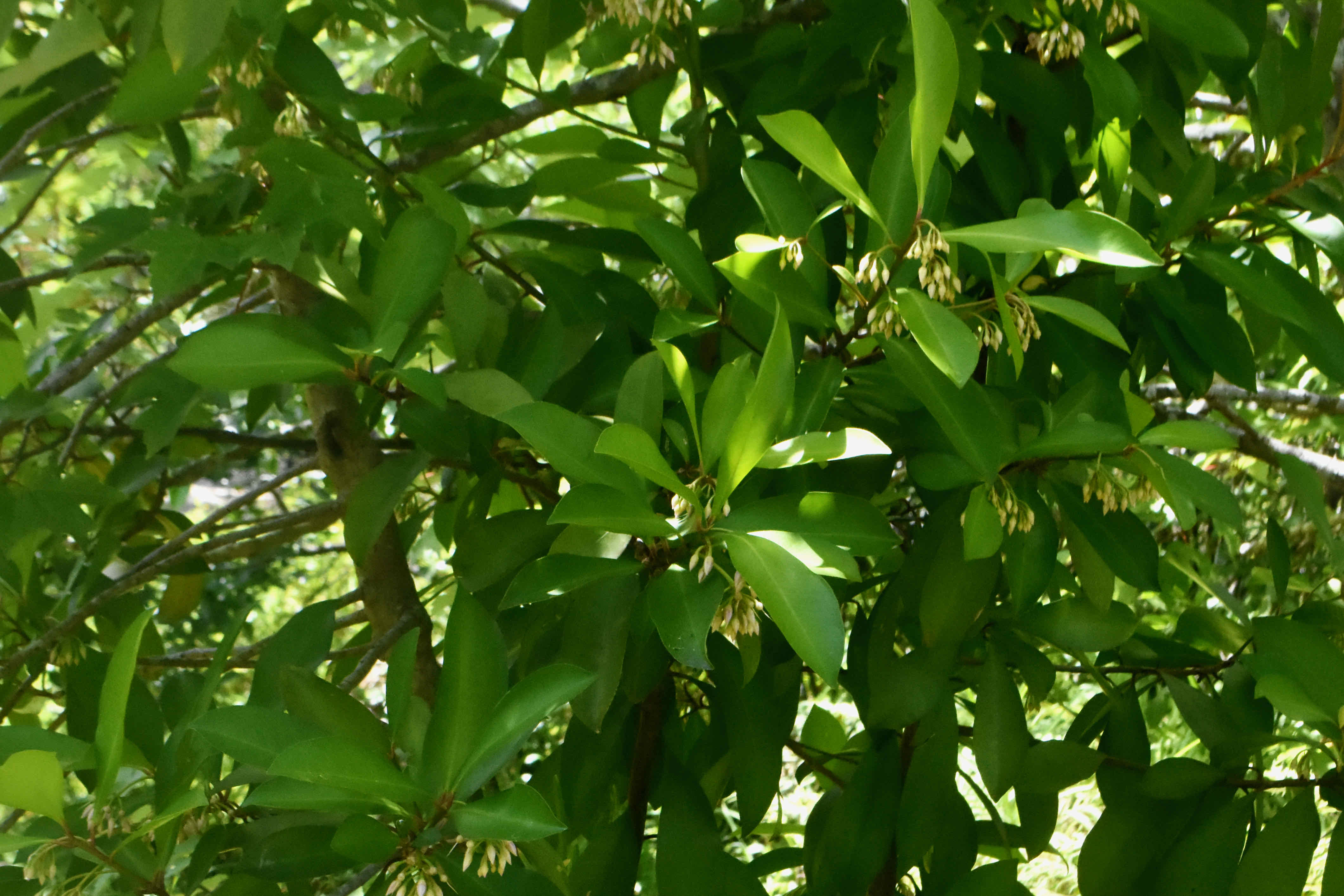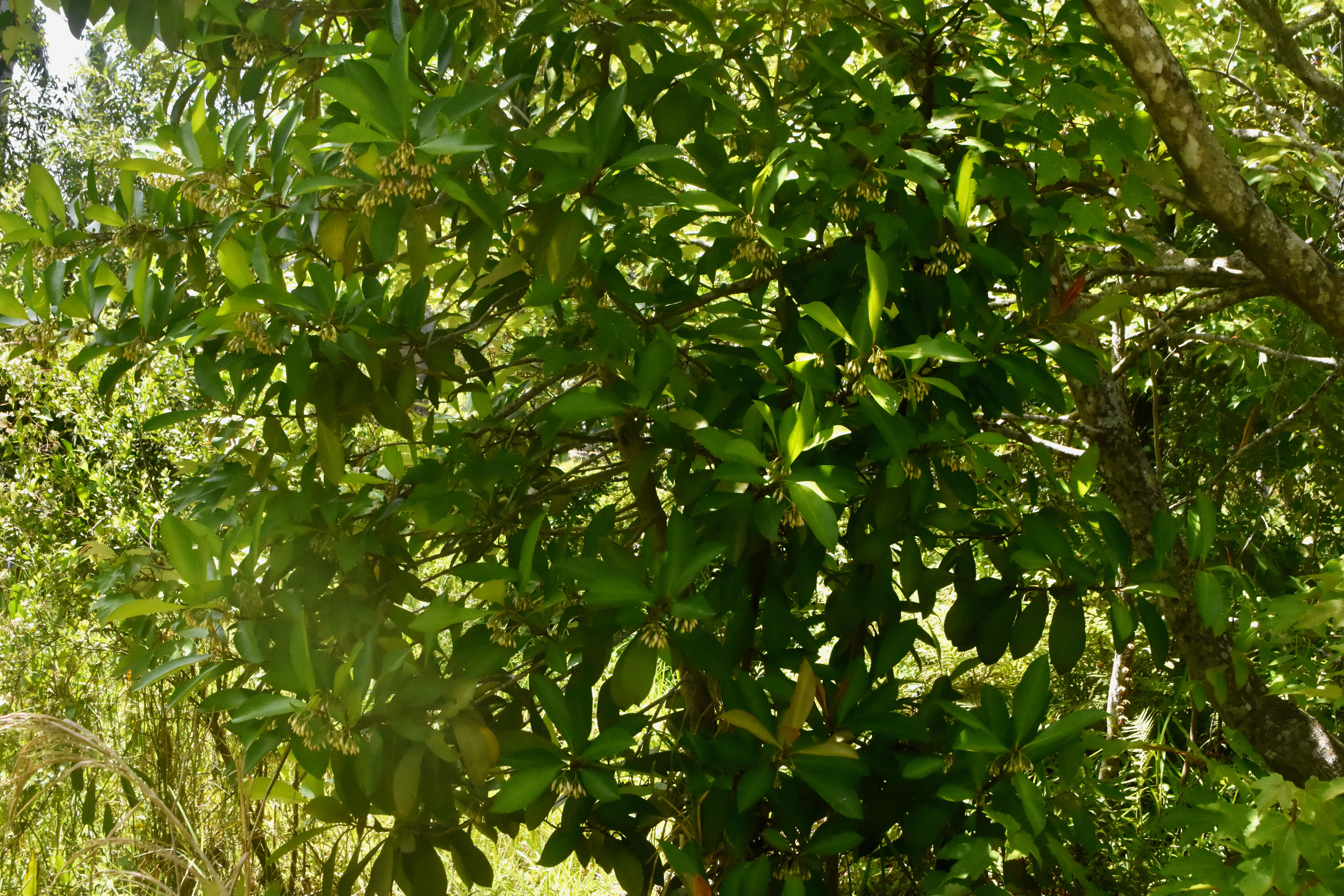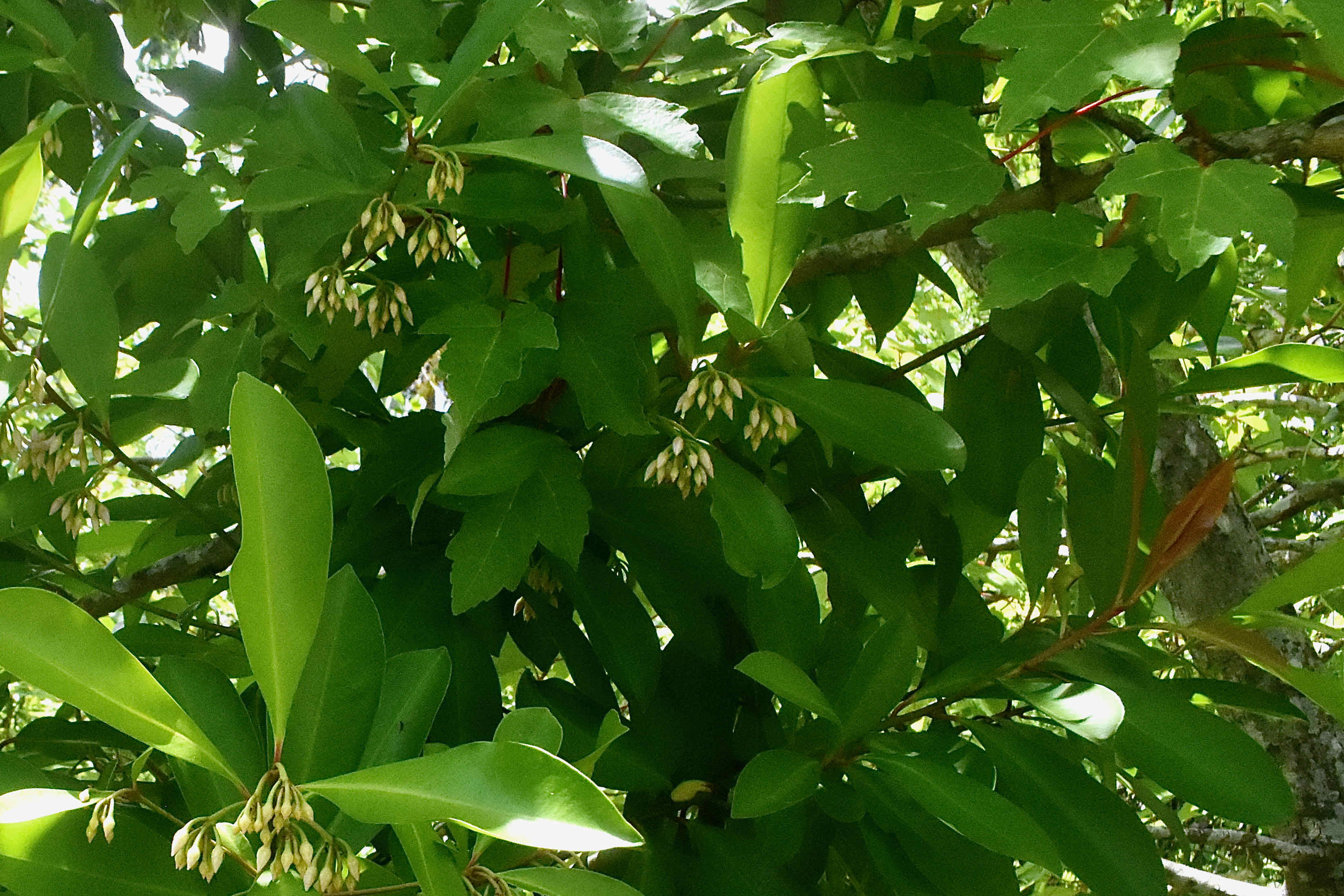
Shoebutton ardisia, photographed at Tradewinds Park, Deerfield Beach, Broward County, in June 2021.
You’re looking at a noxious weed. A handsome noxious weed to be sure. But a noxious weed nonetheless.
It’s shoebutton ardisia, Ardesia elliptica, a cousin of Florida native marlberry, which is considered to be among the most attractive shrubs native to the Sunshine State, especially when it’s in bloom. Shoebutton ardisia shares marlberry’s good looks. In fact the two can be difficult to tell apart from each other. But there is one easy key that separates the two cousins, which we’ll share later. Now, more of the basics.
Shoebutton ardisia’s looks is how it got here in the first place. Somebody somewhere along the line in the days before invasive species became a concern, thought it would make a fine ornamental, a beautiful specimen plant or cool hedge. What puzzles us is why they felt the need to import the plant when we already have a look-alike native.
Thing is it reproduces like crazy and forms dense stands that crowd out native plants. Its berries are tasty treats for birds, who do the spreading by eating the fruit and pooping out the seeds. The Florida Exotic Pest Plant Council lists shoebutton ardisia as a Class I invasive, meaning its a full-blown environmental pest. The state labels it a noxious weed and prohibits its sale. During a hike at Fern Forest Nature Center in early 2020, we spotted numerous seedlings — marked by Fern Forest staff — growing throughout the swamp. Left uncheck it would have become a dominant understory plant, destroying the swamp’s natural ecology. But in this battle, at least, diligence won the day.
It is so much of a problem beyond its native range that it ranks among the world’s 100 worst invasive species, according the authoritative Invasive Plants Compendium.
Shoebutton ardisia is a native of southeast Asia, found in India, Sri Lanka, China, Thailand, Indonesia and the Philippines. It came to Florida some time around 1900, brought here for its good looks, and subsequently escaped into the wild where it has flourished for more than a century. It’s also naturalized in South America, Australia and the Pacific islands, including Hawaii, where it's a major problem.
In Florida, it’s found in coastal counties as far north as Brevard and Pinellas counties.
Shoebutton ardisia is mainly shrubby in habit, but it can grow into a small tree, reaching 17 feet tall. The leaves can be as long as eight inches, oblong to oval in shape and arranged alternately along the stem. They have a leathery texture, the edges are entire (meaning no teeth or lobes); glands on the underside create a dotted look. New foliage often has a reddish tinge, which adds to the plant’s good looks. That can be seen most clearly in right side of the photo at the bottom right.
The flowers are small, pink to off-white, star-shaped and clustered, appearing mostly in summer but shoebutton ardisia can bloom any time of the year. The flowers give way to a red berry that turns black when ripe. The flesh of the berry is white.
The plant likes low-lying, wet habitats, including cypress and mangrove swamps, and it can invade hammocks and tree islands.
All of this is similar to our native marlberry. But here’s where it’s easy to tell the two apart. Marlberry’s flowers are close to the stems, while shoebutton ardisia’s dangle from the stems in clusters. The main photo on this page shows it clearly. Compare with marlberry, here.
If you have shoebutton ardisia growing on your property, the University of Florida’s Center for Aquatic and Invasive plants recommends you get rid of it and replace it with a Florida native, marlberry, for instance, or wild coffee. At the very least, don’t allow it to set fruit.
Fun fact: there are four members of Ardisia found in Florida. All but marlberry are considered invasive.
Shoebutton ardisia is a member of Primulaceae, the primrose family, although some references have it as a member of Myrcinaceae, an older classification.



